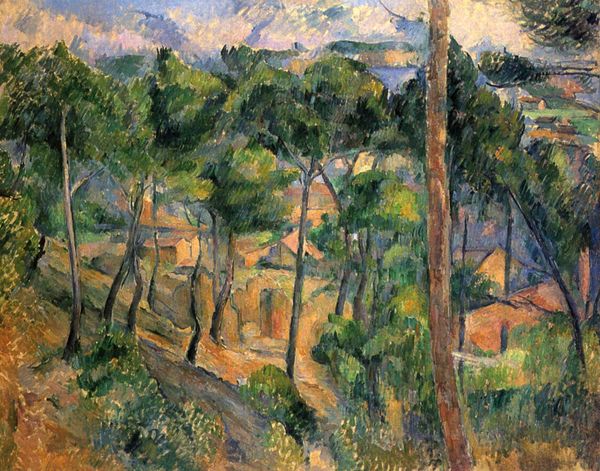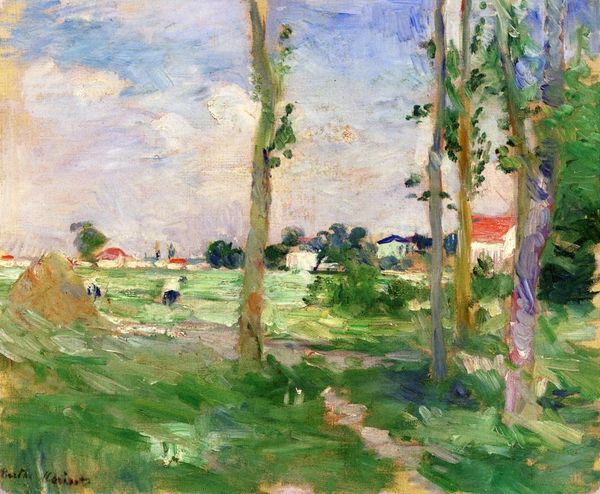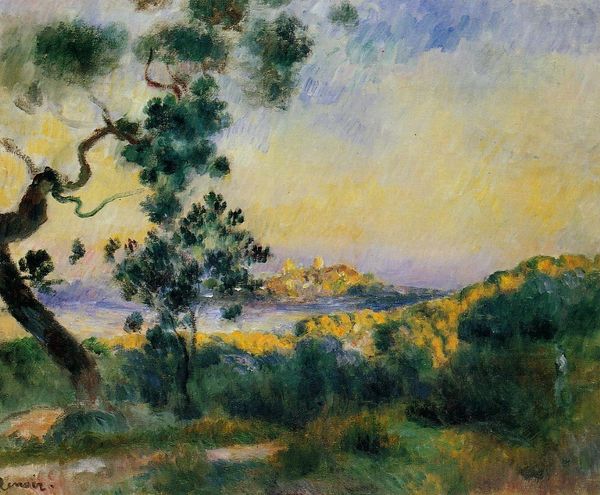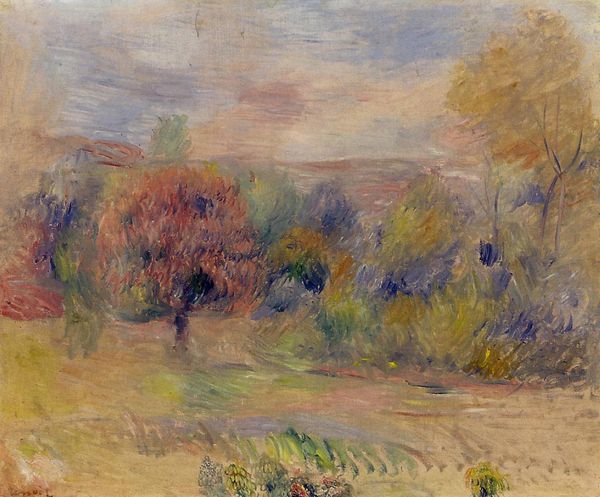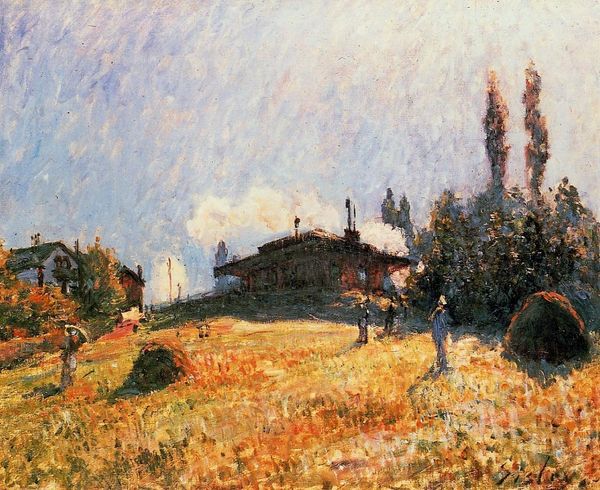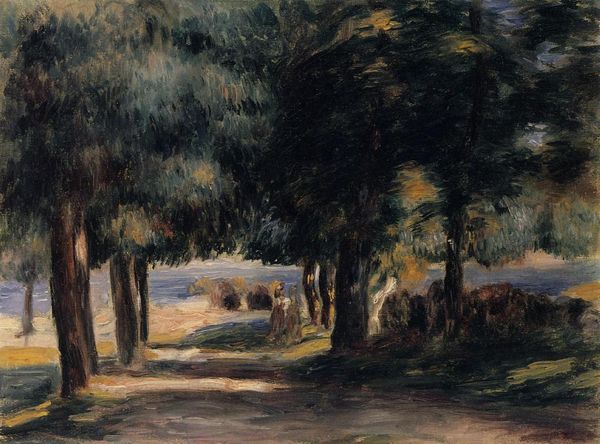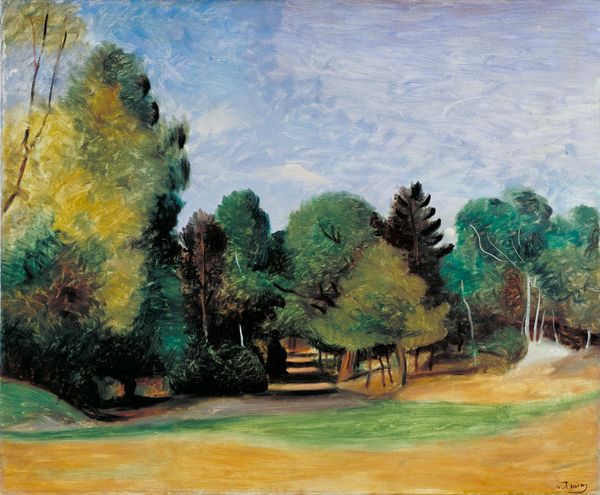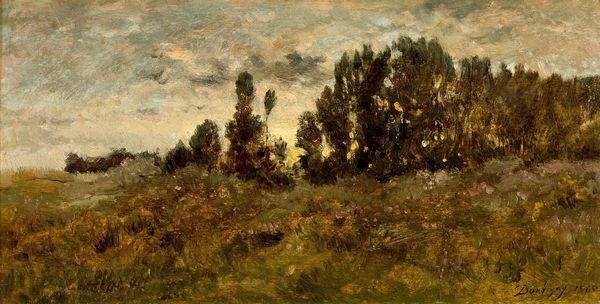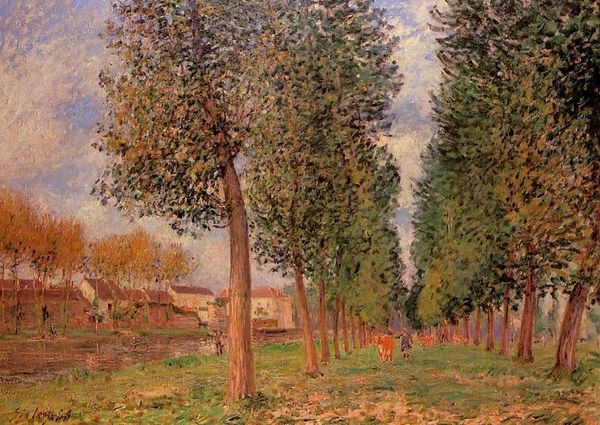
Copyright: Public Domain: Artvee
Curator: What strikes you immediately about Paul Cézanne's "Poplars," painted around 1879-1880? Editor: A sense of being drawn into the landscape, almost overwhelmed by the verticality of the trees. There's a looming, powerful quality to their presence. Curator: Indeed. The use of oil paint applied 'en plein air' aligns Cézanne with the Impressionists, but the methodical brushstrokes suggest a more structural intent, wouldn't you agree? This contrasts sharply with the fleeting moment captured by his contemporaries. Editor: Absolutely. It's like he’s trying to pin down a deeper reality beneath the surface. Those densely packed trees, rendered in varied greens and blues, suggest a world teeming with untold narratives and forgotten figures. The work really showcases the themes that defined the Post-Impressionists. It feels as if the subject and painter are linked with something unseen, as the land in this period experienced considerable cultural turbulence and reform. Curator: Precisely. Looking through the trees, beyond this green arena to that distant point on the left, you can almost sense his intellectual struggles to translate three dimensions onto a flat surface, a formalist approach where composition outweighs naturalism. What do you perceive when regarding the palette, and brushstroke decisions that Cézanne is deploying to further this composition? Editor: The restricted palette and short, directional brushstrokes are interesting. Cézanne seems less interested in pure representation and more in exploring how color and texture can create form. It's as though each stroke is a small building block in the overall structure of the painting and the politics of landscape art, of the land rights being fought for around the time that this piece was created. The trees almost act like barriers. Curator: Which emphasizes the painting’s internal tensions. We see a dialogue between subjective feeling and objective observation, echoing art's shifting position within social and intellectual movements. Editor: Right. Considering art’s power in society through our current, critical lenses only enriches our understanding of Cézanne’s exploration of color, perception, and that intriguing dance between feeling and reason, and that period's concerns and discourse. Curator: Seeing it now, these layers give a unique texture to a conventional genre. Editor: I completely agree, there’s something powerful about viewing that moment caught in paint, its ability to be so telling to its period in both artistic expression and social revolution is striking.
Comments
No comments
Be the first to comment and join the conversation on the ultimate creative platform.
